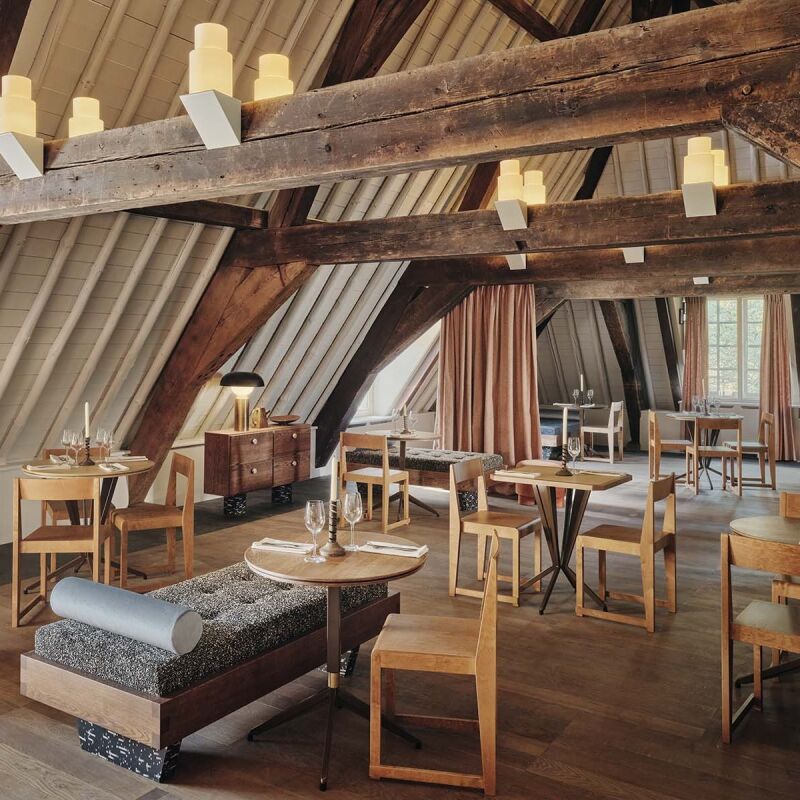New from French chef Bertrand Larcher, owner of the Breizh Café empire of Breton-style crêperies: Otonali, a restaurant in St.-Malo, Brittany, which combines traditional Japanese dishes with Breton ingredients and influences.
Larcher opened his first crêpe restaurant in Tokyo back in 1996 and has since expanded to nine locations across Japan plus three in France: in Cancale, Paris, and St.-Malo. Though the crêperies are unabashedly in the Breton style—they use the traditional buckwheat batter and each restaurant offers a range of more than 60 ciders—they have incorporated Japanese influence over time, and in 2013 Larcher partnered with a Japanese chef to open a fully Japanese restaurant in Brittany that has since earned a Michelin star.
Otonali, which means “next door” in Japanese, sits next to Breizh Café St.-Malo. It was designed by Guillaume Terver, interior architect at Le LAD in Paris, who interpreted Larcher’s passion for raw ingredients with an understated dining room of black, wood, and clay. A large open kitchen takes center stage, while communal tables and bar seating extend the informality of Larcher’s crêperies. To help celebrate the natural wines of the region, the architect commissioned a raw-clay wine cellar from a Breton ceramicist, which is embedded inside the front wall. Lightly finished oak logs, unstained concrete floors, and hand-cut wood joinery round out the barely polished look of the space.
Photography by Guillaume Terver, courtesy of Le LAD.

The guiding theme of the design was “conviviality,” says architect Guillaume Terver. “The large table, with its irregular form, allows diners to feel relaxed, alone or in a group. You are never too far from your neighbor.”




The communal table and bar seating makes “diners discover their meal together, so everyone wants to try what the person sitting next to them is having,” the architect says.




In July, Larcher is opening a gallery next door to Otonali that will specialize in Japanese-Breton ceramics.

Browse our collection of Restaurant Visits, and for more favorites from France from across our sites, see:
- 10 Garden Ideas to Steal from France
- Outbuilding of the Week: A Chic Chicken Coop in France
- Romantic, France-Inspired Tiles from Tabarka Studio




Have a Question or Comment About This Post?
Join the conversation (1)